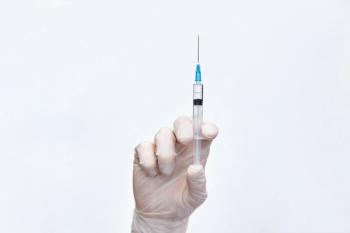
Transplant induction agent leads in clinical trial
Wake Forest University Baptist Medical Center has announced results of a clinical trial comparing alemtuzumab and antithymocyte globulin, agents used in induction before renal and pancreatic transplants.
Key Points
Results are in from the first-ever head-to-head trial of two key agents used for induction before renal and pancreas transplantation. Alemtuzumab (Campath, Genzyme) showed similar-to-better clinical outcomes compared to antithymocyte globulin (Thymoglobulin, Genzyme) with one-dose administration and lower overall cost.
"As we went through the trial, it became evident that one dose of Campath and you're done with induction," said transplant pharmacist and study coauthor William Doares, Wake Forest University Baptist Medical Center, Winston-Salem, N.C. "You need less drug for induction and potentially you can cut your length of stay. Campath is now the standard induction agent for almost all of our renal and pancreas transplants."
Neither of the two drugs is indicated for induction to deplete T-cells before organ transplantation, said lead author Alan Farney, MD, PhD. But about three-quarters of all renal transplant patients get some form of immunosuppressive induction therapy, he added, usually one of the two Genzyme agents. Because the manufacturer declined to fund a trial of the two agents, he said, Wake Forest designed and funded the study in-house.
Researchers randomized 222 patients receiving kidney transplants alone, simultaneous kidney-pancreas transplants, or pancreas-after-kidney transplants between February 2005 and September 2007. Patients in both arms received the same immunosuppressive regimen following induction. The study enrolled essentially all adult transplant patients regardless of age, gender, and risk factors.
"The study population reflects the population that we actually transplant at Wake Forest," Dr. Farney said. "We see the diverse study population as a particular strength of these results."
Thymoglobulin is more often used for transplant induction because of worries that Campath might be associated with increased rates of infection or cancer, he said. After a median follow-up of 24 months, researchers found similar rates of patient survival and graft rejection. Patients in the Campath arm had statistically significant lower rates (14 percent vs. 26 percent) of biopsy-proven acute rejection (BPAR) and longer time to BPAR (4.5 months vs 1.25 months). The study review officer halted enrollment of kidney-only transplants in September 2007 because of the higher rate of BPAR in the Thymoglobulin arm.
Campath patients also showed a significantly higher estimated rates of glomerular filtration and significantly lower rates of both cytomegalovirus infection and polyomavirus nephropathy. Other outcomes, including delayed graft function, length of initial hospitalization, major surgical complications, bacterial and fungal infections, and freedom from steroid use, were similar.
Campath is typically administered as a two-hour infusion just before surgery, said Doares. Thymoglobulin is infused over four to six hours every other day for a total of three to five doses. The cost of the two agents is similar, he said, but single-dose administration is an obvious advantage in both time and cost.
"I like the real-world approach they took, trying to take all comers in this study," said transplant pharmacist Lonnie Smith, manager of solid organ transplants, University of Utah Medical Center, Salt Lake City, Utah. "This really does represent the kind of populations we see."
Smith said his department aims for three doses of Thymoglobulin induction, at a cost of about $7,000 per patient. Switching to Campath, at between $1,300 and $1,500 per induction, is a tempting target.
"In today's economic world, you have to look at costs and utilization patterns," he said. "We will be reviewing the data to see if we need to reconsider our standard practices."
The study, A Randomized Trial of Alemtuzumab versus Antithymocyte Globulin Induction in Renal and Pancreas Transplantation, was published in the Sept. 6, 2009 issue of Transplantation.
Newsletter
Pharmacy practice is always changing. Stay ahead of the curve with the Drug Topics newsletter and get the latest drug information, industry trends, and patient care tips.




